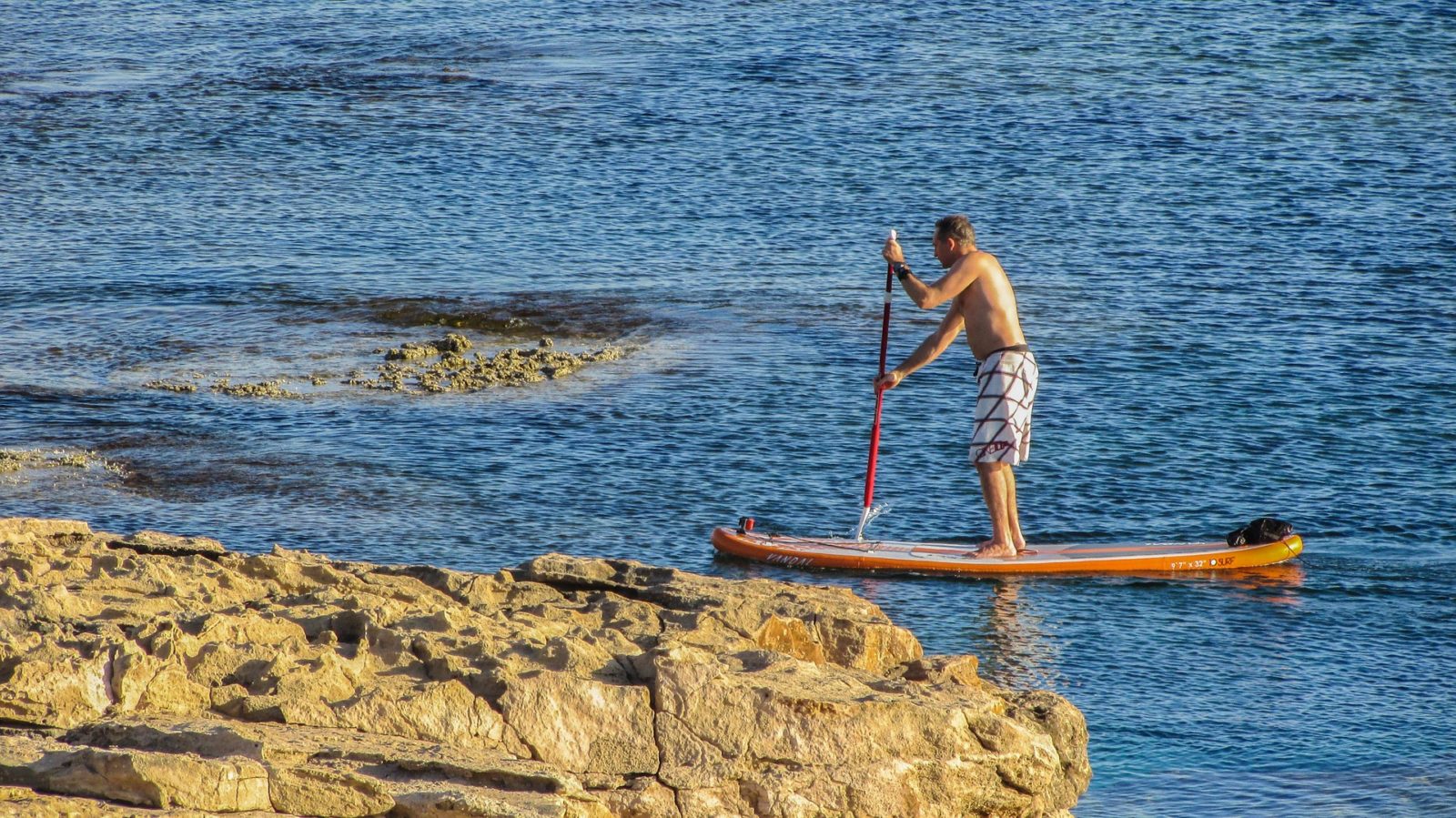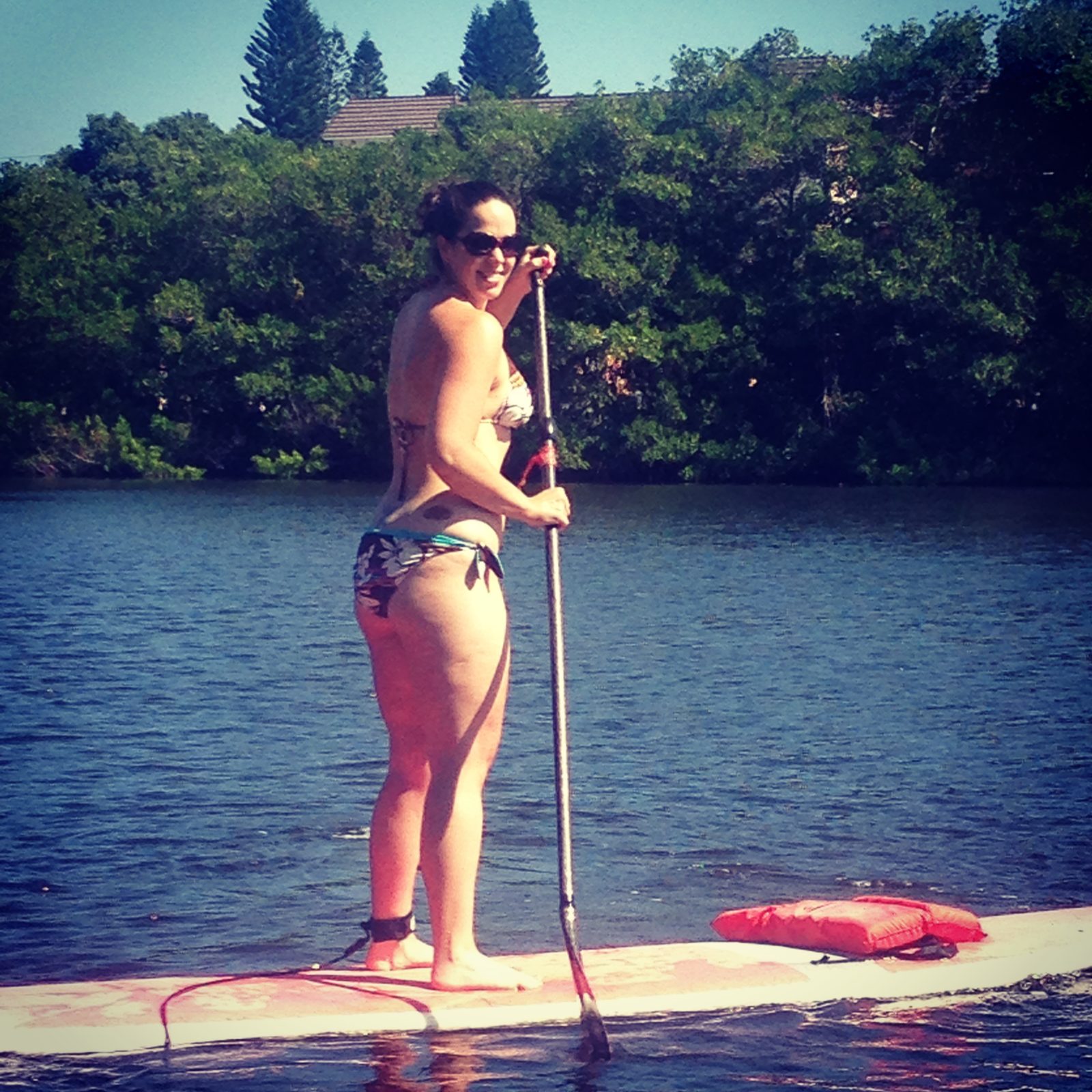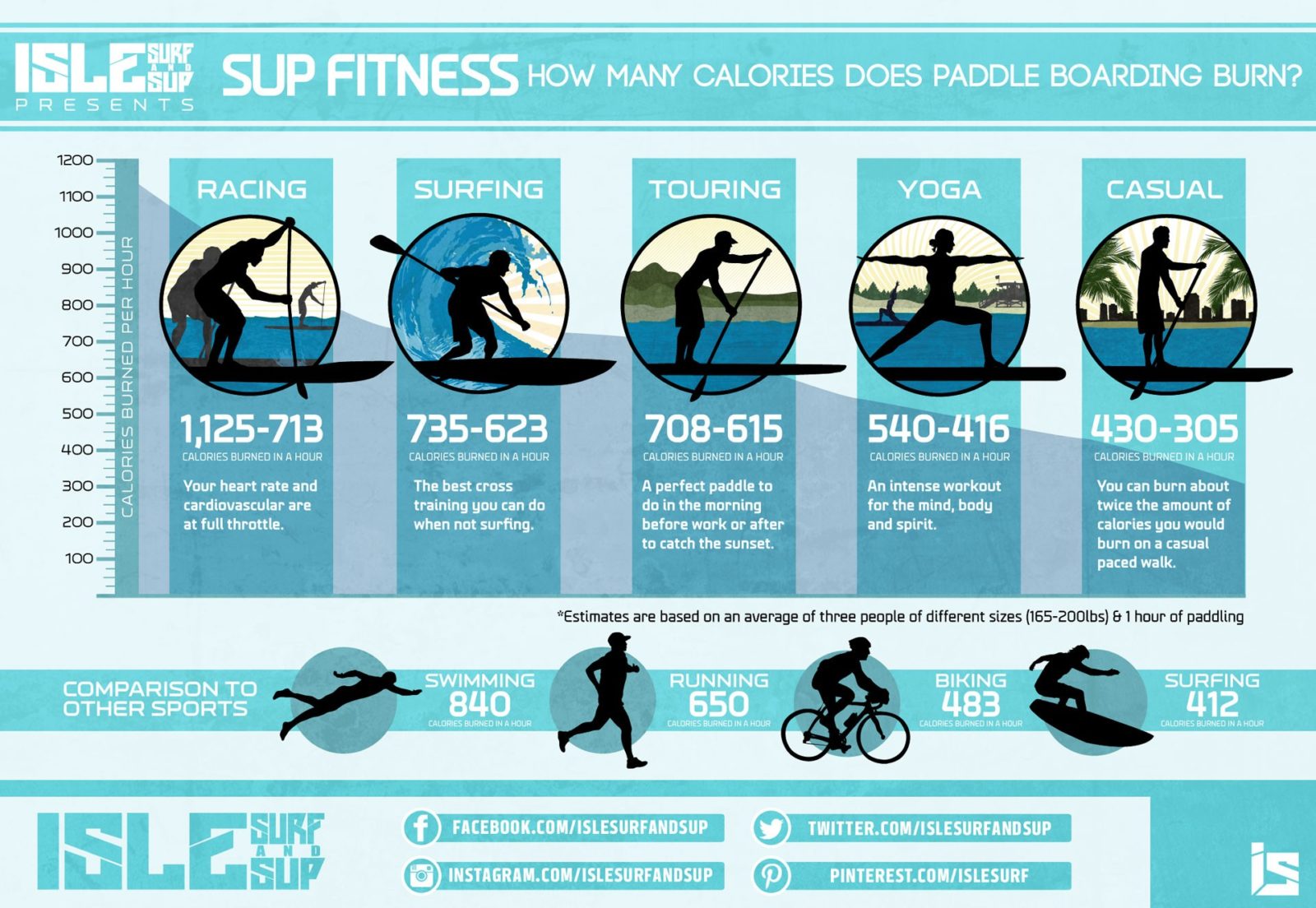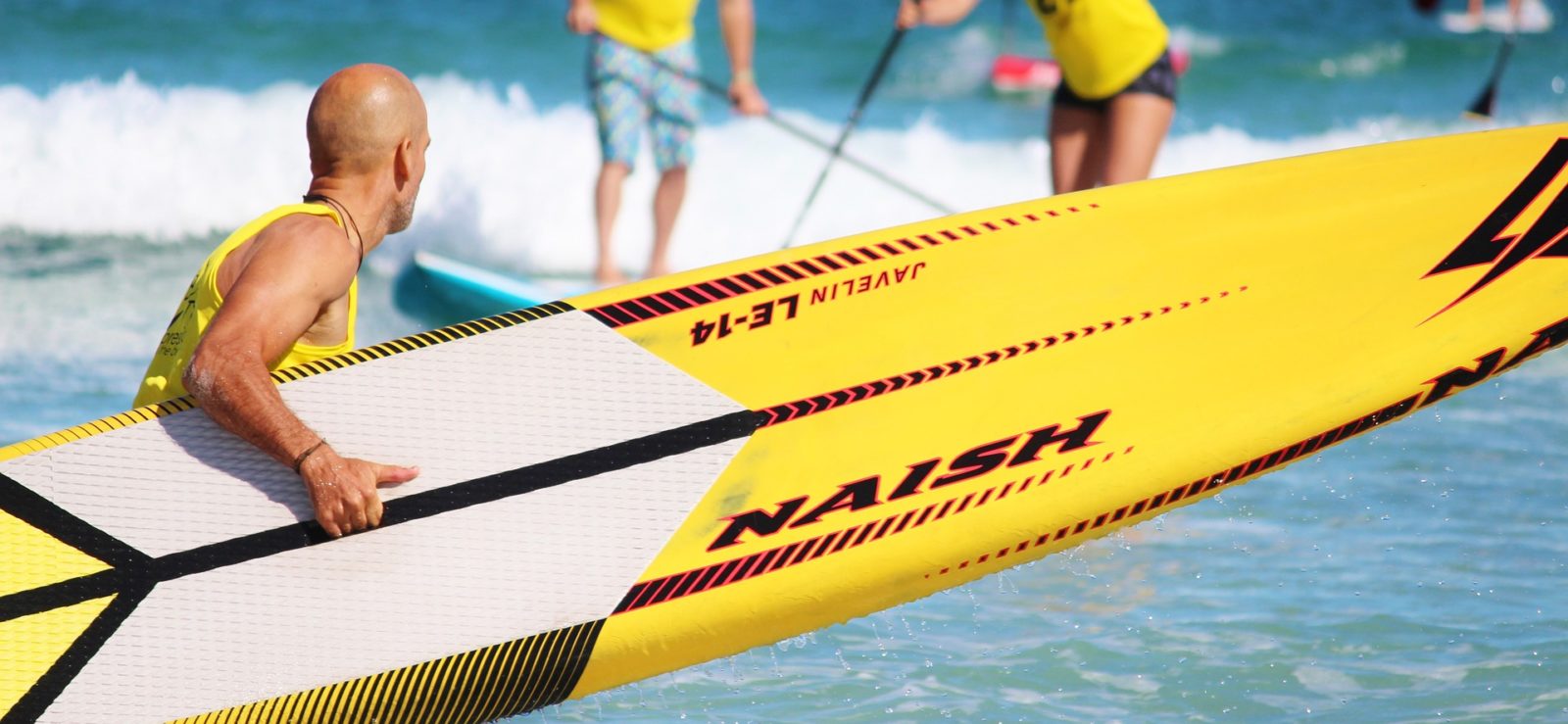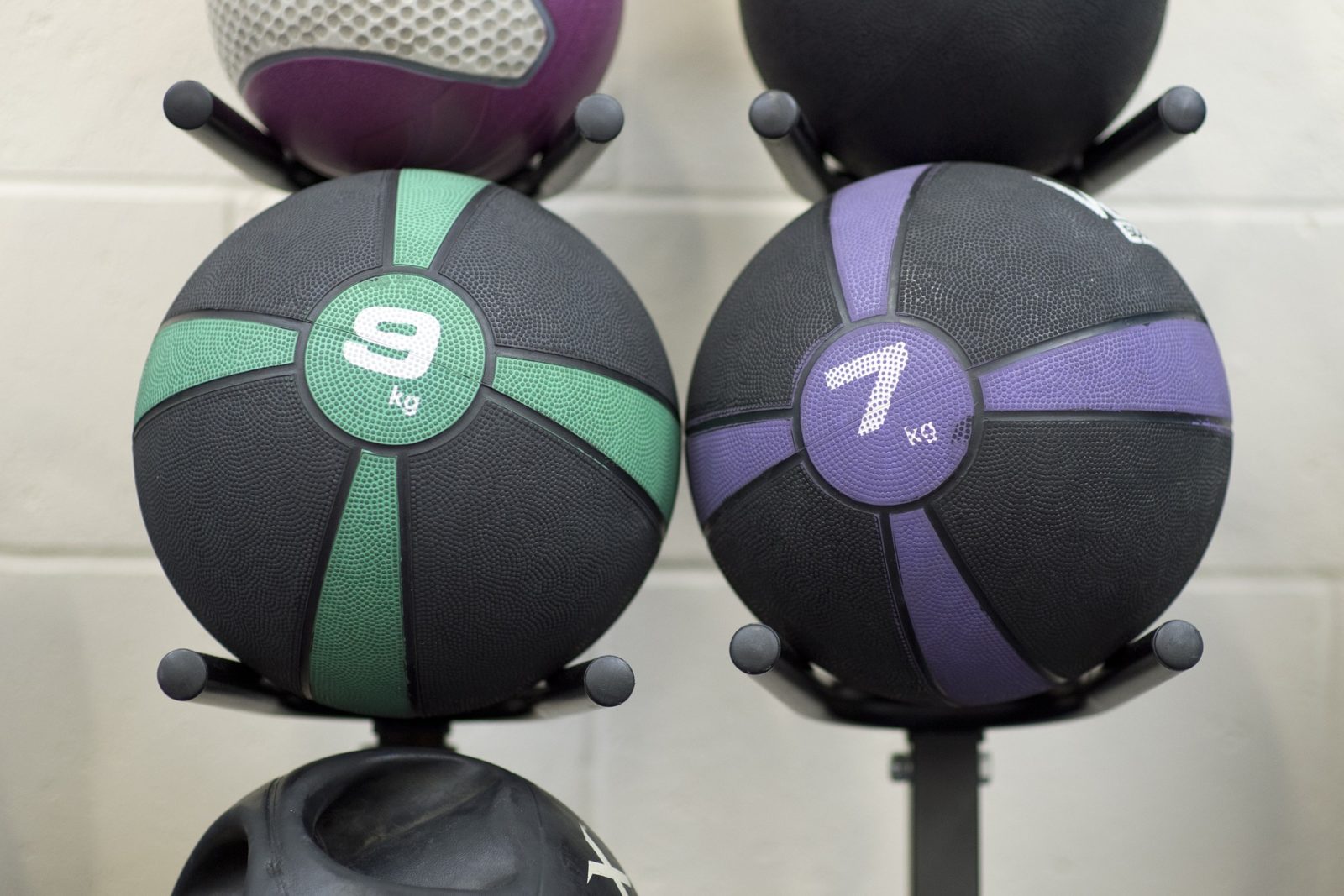I first heard of stand up paddleboarding a couple of years back when a photo of Cameron Diaz on a board with her absolutely ripped abs popped up online. At the time, it was touted as a killer core workout, and I was super intimidated.
But, being a Florida girl and having a serious love for all things water-related, I had to give it a try. Now, stand up paddleboarding is easily my favorite summer time activity. It’s an awesome way to have fun in the sun while at the same time getting in a workout that challenges your entire body (and yes, does some awesome things for your core).
Here’s what you need to know before you set out on your SUP adventure. We’ve even included a workout to help you get in shape to stand up on your board and cruise an ocean or lake near you with ease!
How to Paddleboard: Why We Love It
Any workout that combines heart-pumping cardio with some serious strength benefits is awesome. Effective and fun, SUP is a great way to spend a sunny day with friends while also blasting your arms, core, and legs.
In traditional SUP, you’ll be practicing balance and engaging your core as you stand on the board, and then using your back, biceps, and triceps through each stroke. It doesn’t matter if the water is calm or wavy, you’ll need to recruit your core and lower body constantly for stability, and may even find that your ankles, feet, and toes get a workout as well.
There are tons of variations on stand up paddleboarding, including SUP surfing, SUP Yoga, and even SUP Racing.
According to SUP World Mag, you can burn anywhere between 300 and 1,100 calories per hour paddling depending on your intensity and body weight.
Check out their awesome infographic below with more info on the fitness benefits.
How to Paddleboard: Gear You’ll Need
Here’s more good news about SUP — it doesn’t require much gear to get started. Even better, near any body of water, you’ll find a number of companies who will rent you gear for the day, so you don’t necessarily need to invest in your own paddleboard and the other accouterments to get started in the sport.
If you’re thinking about purchasing the basics, or renting from a company, here’s what you’ll need for your day on the water:
-
Paddleboard
- You’ll want one that’s proportionate to your height and weight to make it easy to stand up on the board. Check out recommendations from REI on what might be right for you.
-
Paddle
- Your paddle will also need to be proportionate to your height in order to be most effective. Experts recommend choosing one that is between 6 and 8 inches taller than you for the best reach (and workout!)
-
Leash
- Not that you’re going to fall off or anything, but if you do the leash is the piece that attaches from your ankle to your board to keep the two of you together. Plus, since your board floats, it’s nice to know it’s just an ankle away if you get into trouble in rough water.
-
Personal Flotation Device
- SUP is fun and safe, but it’s also a water sport and things can go wrong. Since a SUP is classified as a water vessel, the Coast Guard requires you to wear a flotation device while riding.
While not required, we also recommend you wear sunscreen, clothes that can get wet and dry quickly (or a swimsuit), and have a dry-gear bag attached to your board (to hold your phone, care keys, maps, and other things you might need on your journey).
How to Paddleboard: What to Expect
Everyone’s first time on a paddleboard is different, but there are some general things to be ready for the first time you suit up and paddle out.
- Expect to work
- Whether you’re going for an easy cruise on calm waters or you’re in it to win it and heading out for a half-day excursion, be prepared to get a little sweaty. Bring water and nutrition with you to stay fueled up.
- Expect it to not be THAT hard
- Much like any other physical activity, SUP is as hard as you make it. For most people, the biggest challenge is standing up on the board, but once you’re up there, it’s up to you how hard and fast you go.
- Expect to have your balance challenged constantly
- Getting from your knees to a standing position is initially the trickiest part, but once you’re up there, don’t get overconfident. Remember to keep a firm base on your feet and to push and pull from the large muscle groups in your core and you’ll be just fine.
- Talk with a guide about what else to expect
- Most beginners will rent gear from an equipment company who may also offer a guided paddle. Take the time to talk with the company about what to expect for your trip. Find out if they deliver the gear to your location, if they have different sized gear available, if they provide a map or a tour guide, and ask about the pricing for the tour.
- Some companies may offer out-and-back services where they will transport your coolers and dry gear to a pre-determined destination that you can paddle to, eat and refresh, before paddling back to your start point.
The key to having a great first time is to know what you’re getting into, so ask lots of questions before you go!
A Workout to Help You Prep
I promise you, if I can SUP, you can SUP. But, if you want a little extra reassurance, check out this 3-move workout that you can add into your existing schedule or do as a stand-alone to get you ready to brave the wild waters on your board.
The instability of the BOSU is a great simulation of what it feels like pushing yourself up on the board in the water. Plus, the move works your core, chest, and triceps which you’ll be using while you SUP. Do it with the squishy side down so that your hands are on the black flat base.
BOSU Squat
3 Rounds of 20 reps at bodyweight
3 Rounds of 20 reps at bodyweight
This is NOT a bro-squat that you’ll do with a ton of weight. Instead, this is a squat done on the squishy blue side of the BOSU that is designed to challenge your ankles and feet while also forcing you to balance through a movement. Remember, the tighter you hold your core, the more effective this will be.
Med-Ball Oblique Twist
3 Rounds of 20 reps each side with 5-15-pound ball
3 Rounds of 20 reps each side with 5-15-pound ball
Having strong obliques is essential to generating enough force when you paddle. Do this exercise with your feet on the ground or elevated focusing on a complete twist. Aim to tap the ball next to your hip with a strong shoulder rotation on each side.
Are you ready to hit the water? Be sure to let us know how your adventure goes in the comments below!

